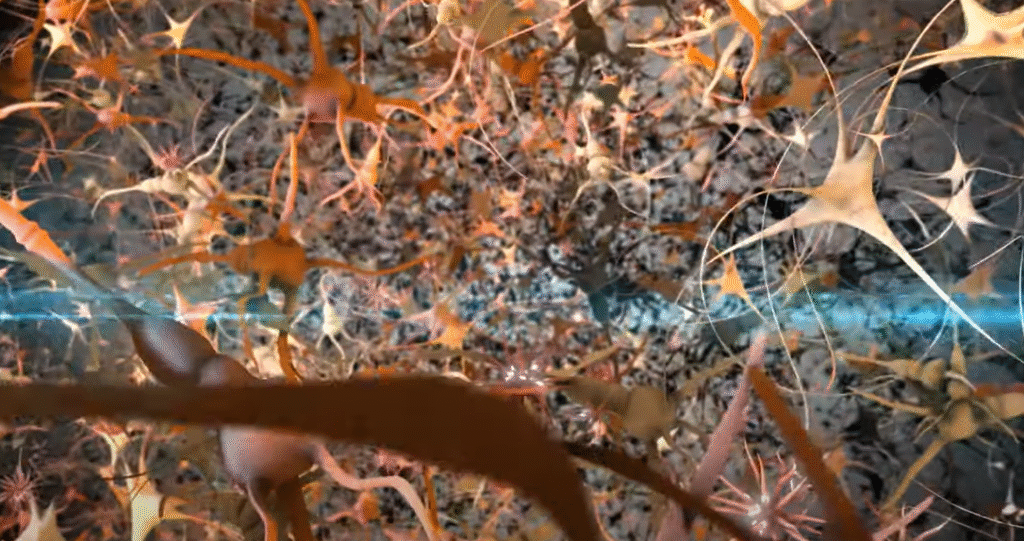Instead of arising from a single, distinct cause, schizoaffective disorder is the result of a complex interplay between life events, brain chemistry, and genetics that culminates in a tipping point. According to experts, it is a fault line that lies beneath the surface and is just waiting to be cracked open by external shocks. Similar to how heart conditions frequently recur across generations, family history is one of the best indicators. The risk is significantly increased if parents or siblings have schizophrenia, bipolar disorder, or schizoaffective disorder.
Research on brain imaging has revealed incredibly useful information about structural alterations, especially in the thalamus and hippocampal regions. Dopamine and serotonin neurotransmitter imbalances emphasize even more how sensitive brain communication can be interfered with. Although the condition is not guaranteed by these abnormalities, they do make the brain particularly susceptible to increasing external pressures.
Bio & Information Table
| Category | Details |
|---|---|
| Disorder Name | Schizoaffective Disorder |
| Classification | Chronic mental health condition combining schizophrenia and mood disorders |
| First Identified | Mid-20th century |
| Common Onset Age | Late teens to early adulthood |
| Types | Bipolar type (mania + depression + psychosis), Depressive type (depression + psychosis) |
| Core Symptoms | Delusions, hallucinations, disorganized thinking, mood disturbances |
| Risk Factors | Genetics, brain chemistry, trauma, substance use |
| Treatment Options | Antipsychotics, mood stabilizers, antidepressants, psychotherapy |
| Prognosis | Manageable with long-term treatment, not curable |
| Reference | Mayo Clinic – https://www.mayoclinic.org/syc-20354504 |

Often, stressful situations act as the catalyst. Traumas like abuse, death, or long-term financial difficulties can act like a sudden disturbance of a swarm of bees, upsetting a delicate equilibrium and causing chaos. The significant rise in new diagnoses of mood and psychotic disorders during the pandemic highlights how hidden predispositions can be exacerbated by collective stress. Although stress does not cause the illness, it does hasten its onset in people who are already at risk.
It has long been known that drug use is a particularly harmful trigger. Drugs that alter brain chemistry, such as cocaine, cannabis, and hallucinogens, have been significantly associated with an earlier onset in vulnerable people. Celebrities like Britney Spears and Demi Lovato have publicly talked about how substance abuse exacerbated their mental health issues, and they have shared eerily similar warnings about the connection between addiction and mental vulnerability.
Environmental factors are also very important. Genetic risks can be increased by experiencing discrimination, growing up in high-stress urban environments, or living with unstable family structures. Using information from extensive population studies, scientists propose that these environmental stressors change the expression of vulnerable genes rather than directly causing the disorder—a process known as epigenetics. According to this perspective, schizoaffective disorder is a dynamic interplay between nature and nurture rather than a fixed destiny.
The condition is frequently misdiagnosed or delayed because it falls between the categories of mood disorders and psychosis. People like Brian Wilson of The Beach Boys were misinterpreted for years, and their psychiatric traits were dismissed as creative eccentricities. Although not directly related to schizoaffective disorder, the advocacy of celebrities like Lady Gaga and Kanye West has been especially helpful in de-stigmatizing severe mental illness in the modern era. Their voices have made it possible for people to ask for assistance more freely and earlier.
Early symptoms, such as difficulty maintaining focus, irregular sleep patterns, or withdrawal from social activities, are frequently subtle. Families often remember periods of extreme stress or drug experimentation prior to major breakdowns. This pattern supports the two-hit theory, which holds that environmental stress deals the second blow after a genetic predisposition sets the stage.
Ignoring these triggers has incredibly obvious societal costs. Schizoaffective disorder that is left untreated greatly impairs one’s capacity to work, exacerbates feelings of loneliness, and raises the risk of substance abuse, homelessness, and suicide. On the other hand, symptoms can significantly improve with early access to treatment. When used in conjunction with psychotherapy, medications like mood stabilizers, antipsychotics, and antidepressants are very effective at establishing stability. Patients who receive skills training for everyday living and social integration have shown remarkable success in reestablishing their lives after illness has disrupted them.
As public figures and celebrities normalize discussions about mental health, public perception has changed in recent years. Viewers realize these conditions are not clinical abstractions but rather human struggles when they witness celebrities sharing their vulnerabilities. This visibility encourages young adults to speak up when symptoms appear, which is especially creative in eradicating stigma. Already, lives have been saved by society’s readiness to acknowledge and act with compassion.
Although it is not a guarantee, prevention is becoming more and more seen as feasible. When weighed against the enormous financial and psychological costs of untreated illness, stress-reduction initiatives in schools, easily accessible counseling services, and campaigns to reduce substance abuse are surprisingly inexpensive. The argument for proactive care is extremely strong in communities that invest in these resources because they see improved long-term results and reduced rates of psychiatric hospitalizations.

